Mikey-
Active Member
Hey guys, I’d like to share a few thoughts on my experience at the Bosch press event for the new 2020 motors that wasn’t covered in the video. If you haven't seen it yet, here's the event video:
and the ABS video:
Some thoughts: The first thing I thought was, why so many motors? Bosch is taking a stance in which the motors are set for their purpose, and the bike company can choose which motor to use rather than giving the bike company the task of customizing output, power curve, behavior and so on. I think that Bosch has their motor systems so finely tuned that they don’t want it being compromised by bike companies. It may sound harsh, but Bosch isn’t known for their flexibility. Regardless, this will make it easier and more transparent for shoppers to decide on a bike with a purpose built motor, and I think that’s a good thing.
Bosch was keen to tell us at the press event that the new motor systems for 2020 are not called “Gen 4”, as it had been rumored in the past. The idea is that the 1st generation was the Europe launch in 2010, the 2nd generation was the 2014 system we’ve known and loved since, the 3rd generation is the Active Line that had a slower rollout, and this new chassis… not Gen 4… houses all the special use motors. I couldn’t tell you why the standard Performance Line motor is cased in the Active Line chassis. Perhaps its cost savings? Maybe gearing? I would think that if a honking 400% assist beast could fit in the tiny shell, then certainly the 300% assist we’ve come to love would fit. Then again, my engineering degree is a little frayed from the cracker jacks I had to excavate it from.
I was so impressed by the ABS system that I made a video just about that at the event. It’s great! But one thing I didn’t mention in the video was the discussion about the ABS system during the press event. At the event, there were media representatives from around the world, but mostly Europe. The folks at Bosch were lamentful that the ABS system didn’t receive better reception in the market, they were surprised that it didn’t sell very well. It didn’t take long for the attendees to offer their feedback. A representative from the Netherlands said there was no need for such a system, then an Italian took the mic and expressed his distaste for the appearance of the unit. Naturally, Bosch maintained their belief in the system, saying that it works best on hills, and that “form follows function”. The Italian representative seemed to feel dismissed at this.
As a representative of the United States of America, I felt it was my duty to travel to ask the engineers and CEO directly: “When will Bosch employ a throttle on their systems?” During the conference, on stage, the response was “Why? It already performs naturally as a bicycle, why would you want to change that?” I simply responded “Throttles are very popular in America.” “Ah yes” Clause said “Throttles are an American phenomenon.” (the rest is a paraphrase) “Years ago, we actually looked into the viability of providing a throttle for our American systems. The obstacle we faced was legislative. Bosch did not want to be seen as motorcycle company, barring access for eMTB in certain zones. We wanted full and complete access, if we could. And I think we have come much closer to accomplishing this in America.”
As it turns out, Europe has a baffling problem with eBike legislation. Here’s one example. In Germany and UK, what percentage of total Bosch eBikes use the 45kmph system? 30%? 40%? My educated guess, having worked for and in eBike shops would be about 20-30%. I was told by the UK Bosch sales manager it’s less than 1%. A Bosch eBike HQ employee told me the same thing about Germany. The problem is regulation. Getting a 45kmph bike means extra taxes, fees, registration, insurance, and mandated lights, and license plate. All of this costs about $1,000 on the outset, and about $400 a year after that. Bosch has been fighting hard to oppose restrictive legislation, like these and the “two meter rule”, which was totally foreign to me. The CEO was ardent in his opposition of this law, but I never did figure out what it was.
This sort of problem isn’t that big of a deal in America. Americans buy a much higher ratio of speed bikes over their European counterparts since there are very few restrictions, and even fewer enforcement. Another can of worms opened up by these laws is the “anti-tuning” stance that Bosch is taking. Bosch is actively implementing safeguards to prevent users from hacking their systems to make them go faster. Bosch has installed software that detects hacking, and will force the bike into “limp home mode”. After this, the bike must be taken to a dealer to have this artificial restriction removed. This can be done 3 times, and after that, the bike is permanently stuck in “limp-home mode”. Since Bosch is a leader in eBike systems, it makes sense that they would feel (or be) coerced into taking action against illegal activity to set a precedent in the industry and to stave off the impression that they don’t care about safety or the law. Personally, I think we need to fight the good fight at home and prevent oppressive laws from being enacted in the United States. Be active in your communities, be a good example, be courteous, and we will keep our legal protections as cyclists in tact. If such laws infect our country, we can’t expect Bosch HQ in Germany to be able to do anything about it.
I’ve got more I want to share, but I’ll open it up for questions and comments. It’s been a long night, and I’ve got to catch some Z’s. Let me know what questions you have, I’ll be hanging out on this thread for a while longer the next couple weeks at least.
and the ABS video:
Some thoughts: The first thing I thought was, why so many motors? Bosch is taking a stance in which the motors are set for their purpose, and the bike company can choose which motor to use rather than giving the bike company the task of customizing output, power curve, behavior and so on. I think that Bosch has their motor systems so finely tuned that they don’t want it being compromised by bike companies. It may sound harsh, but Bosch isn’t known for their flexibility. Regardless, this will make it easier and more transparent for shoppers to decide on a bike with a purpose built motor, and I think that’s a good thing.
Bosch was keen to tell us at the press event that the new motor systems for 2020 are not called “Gen 4”, as it had been rumored in the past. The idea is that the 1st generation was the Europe launch in 2010, the 2nd generation was the 2014 system we’ve known and loved since, the 3rd generation is the Active Line that had a slower rollout, and this new chassis… not Gen 4… houses all the special use motors. I couldn’t tell you why the standard Performance Line motor is cased in the Active Line chassis. Perhaps its cost savings? Maybe gearing? I would think that if a honking 400% assist beast could fit in the tiny shell, then certainly the 300% assist we’ve come to love would fit. Then again, my engineering degree is a little frayed from the cracker jacks I had to excavate it from.
I was so impressed by the ABS system that I made a video just about that at the event. It’s great! But one thing I didn’t mention in the video was the discussion about the ABS system during the press event. At the event, there were media representatives from around the world, but mostly Europe. The folks at Bosch were lamentful that the ABS system didn’t receive better reception in the market, they were surprised that it didn’t sell very well. It didn’t take long for the attendees to offer their feedback. A representative from the Netherlands said there was no need for such a system, then an Italian took the mic and expressed his distaste for the appearance of the unit. Naturally, Bosch maintained their belief in the system, saying that it works best on hills, and that “form follows function”. The Italian representative seemed to feel dismissed at this.
As a representative of the United States of America, I felt it was my duty to travel to ask the engineers and CEO directly: “When will Bosch employ a throttle on their systems?” During the conference, on stage, the response was “Why? It already performs naturally as a bicycle, why would you want to change that?” I simply responded “Throttles are very popular in America.” “Ah yes” Clause said “Throttles are an American phenomenon.” (the rest is a paraphrase) “Years ago, we actually looked into the viability of providing a throttle for our American systems. The obstacle we faced was legislative. Bosch did not want to be seen as motorcycle company, barring access for eMTB in certain zones. We wanted full and complete access, if we could. And I think we have come much closer to accomplishing this in America.”
As it turns out, Europe has a baffling problem with eBike legislation. Here’s one example. In Germany and UK, what percentage of total Bosch eBikes use the 45kmph system? 30%? 40%? My educated guess, having worked for and in eBike shops would be about 20-30%. I was told by the UK Bosch sales manager it’s less than 1%. A Bosch eBike HQ employee told me the same thing about Germany. The problem is regulation. Getting a 45kmph bike means extra taxes, fees, registration, insurance, and mandated lights, and license plate. All of this costs about $1,000 on the outset, and about $400 a year after that. Bosch has been fighting hard to oppose restrictive legislation, like these and the “two meter rule”, which was totally foreign to me. The CEO was ardent in his opposition of this law, but I never did figure out what it was.
This sort of problem isn’t that big of a deal in America. Americans buy a much higher ratio of speed bikes over their European counterparts since there are very few restrictions, and even fewer enforcement. Another can of worms opened up by these laws is the “anti-tuning” stance that Bosch is taking. Bosch is actively implementing safeguards to prevent users from hacking their systems to make them go faster. Bosch has installed software that detects hacking, and will force the bike into “limp home mode”. After this, the bike must be taken to a dealer to have this artificial restriction removed. This can be done 3 times, and after that, the bike is permanently stuck in “limp-home mode”. Since Bosch is a leader in eBike systems, it makes sense that they would feel (or be) coerced into taking action against illegal activity to set a precedent in the industry and to stave off the impression that they don’t care about safety or the law. Personally, I think we need to fight the good fight at home and prevent oppressive laws from being enacted in the United States. Be active in your communities, be a good example, be courteous, and we will keep our legal protections as cyclists in tact. If such laws infect our country, we can’t expect Bosch HQ in Germany to be able to do anything about it.
I’ve got more I want to share, but I’ll open it up for questions and comments. It’s been a long night, and I’ve got to catch some Z’s. Let me know what questions you have, I’ll be hanging out on this thread for a while longer the next couple weeks at least.
Attachments
-
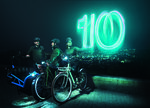 01_Bosch-eBike_10-years_2.jpg540.7 KB · Views: 970
01_Bosch-eBike_10-years_2.jpg540.7 KB · Views: 970 -
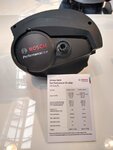 IMG_20190605_131523843_HDR.jpg64.7 KB · Views: 1,315
IMG_20190605_131523843_HDR.jpg64.7 KB · Views: 1,315 -
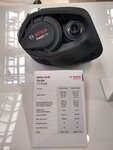 IMG_20190605_131609594_HDR.jpg64.6 KB · Views: 953
IMG_20190605_131609594_HDR.jpg64.6 KB · Views: 953 -
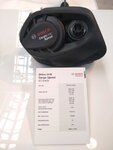 IMG_20190605_131603881.jpg54.1 KB · Views: 997
IMG_20190605_131603881.jpg54.1 KB · Views: 997 -
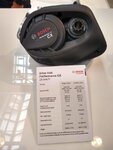 IMG_20190605_131538791_HDR.jpg72.3 KB · Views: 1,121
IMG_20190605_131538791_HDR.jpg72.3 KB · Views: 1,121 -
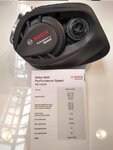 IMG_20190605_131531900_HDR.jpg64.6 KB · Views: 1,257
IMG_20190605_131531900_HDR.jpg64.6 KB · Views: 1,257